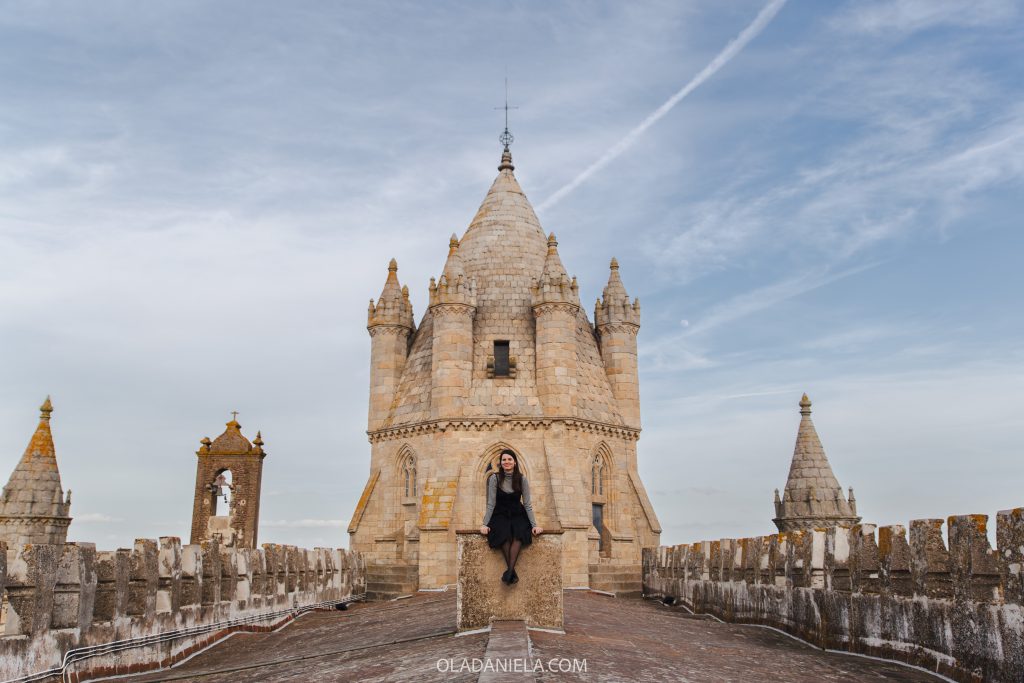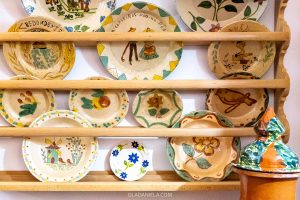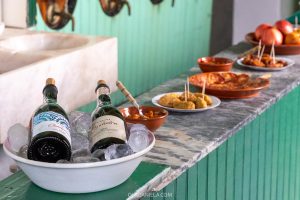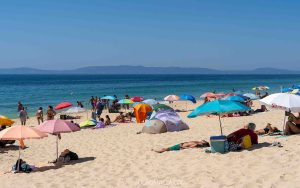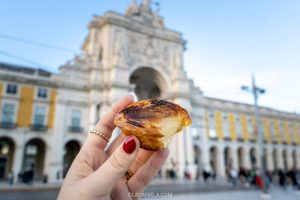Évora is an incredible small city where you can soak up history, dive into local gastronomy, or just slow down and enjoy the Alentejo’s famously relaxed pace. The UNESCO-listed centre is a time capsule of Roman, Moorish, and medieval influences, yet Évora has an energetic and youthful vibe.
I live in Lisbon and have visited Évora half a dozen times, usually staying overnight. If I had two days – or even just 36 hours – in the Alentejo capital, here’s how I’d connect with this whitewashed city and its unique culture. Use my 48-hour Évora itinerary to help you make the most of your visit.
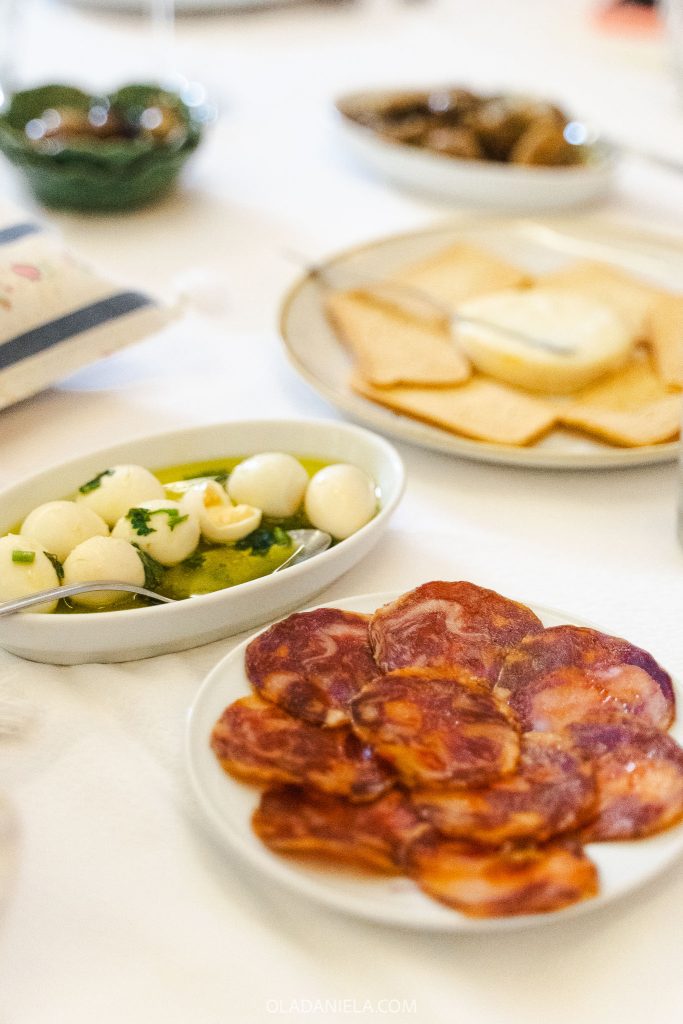
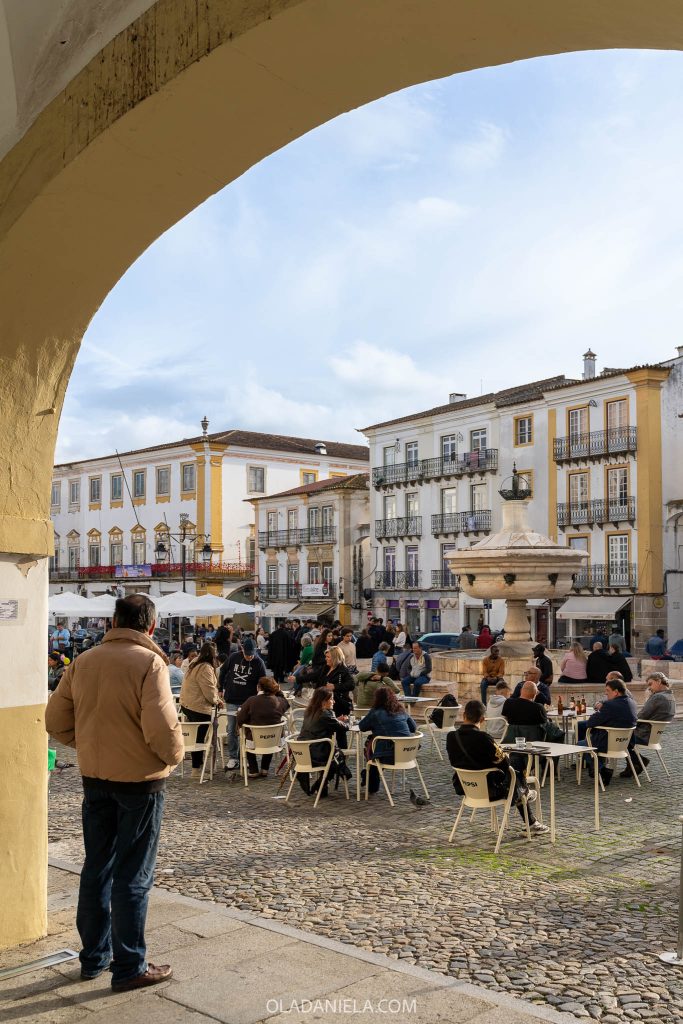
Contents
ToggleWhere is Évora, Portugal?
Évora is located in the Alentejo region, around a 90-minute drive or train ride east of Lisbon. While it’s not directly on the way to major tourist hubs, it makes for a rewarding detour – either as a stopover en route to the Algarve, on the road to Seville in Spain, or as part of a journey north towards Lisbon or Porto.
Can you take a day trip from Lisbon to Évora?
Yes, it’s possible to visit Évora on a day trip. Many trains and coaches run frequently between the two cities, and the drive is easy if you have a rental car.
I’ve written this two-day Évora itinerary as I feel the city and area is best enjoyed at a slower space. Spending at least one night allows you to experience its golden sunsets, dine at its excellent restaurants, and even take a day trip to nearby villages like Monsaraz or Estremoz. But if you’re short on time, a city highlights guided tour or full-day trip will help you see the top sights efficiently within a day.
In a rush? Here’s my mini guide for 48 hours in Évora
Where to stay:
- 5-star hotel: M’ar de Ar Aqueduto
- Historic 4-star: Hotel Albergaria do Calvário
- Modern 4-star: Evora Olive Hotel
What to do and see in 48 hours:
Day 1:
- Try local sweets at a top bakery (filled with gorgeous tiles)
- Visit Évora’s top sights with a guide: Bone Chapel, Roman Temple and Cathedral
- Explore Évora’s most beautiful garden and its hidden mini history museum
- Use the afternoon to shop artisan goods, soak in a Roman-style spa, see the aquaduct, or visit many churches
- Go for a sunset drink at Praça do Giraldo, then traditional Alentejo food for dinner
Day 2:
- Visit the Cromlech of the Almendres with a guide
- Or tour a sixth-generation 1,400-acre family cork farm in a Jeep
- Taste the Alentejo’s tannin-heavy red wines over lunch, join a guided tasting
- Or make an afternoon of it with a small-group wine tour.
- Explore might sights in Évora, or visit nearby villages such as Monsaraz, Arraiolos, Estremoz and Redondo.
Day 1 in Évora
➼ Wish someone could shortcut your Portugal research? ➼ Talk to me – I offer 1:1 video calls to help cut through the noise and plan your perfect Portugal itinerary. Find out more here.
Morning: Traditional convent sweets stop
If you’re not planning to rent a car, taking the train to Évora is quick and easy. I always book trains directly through cp.pt, but if you’re struggling with the website try Omio. Trains leave Lisbon from Sete Rios, Entrecampos and Oriente stations, arriving into Évora less than 90 minutes later.
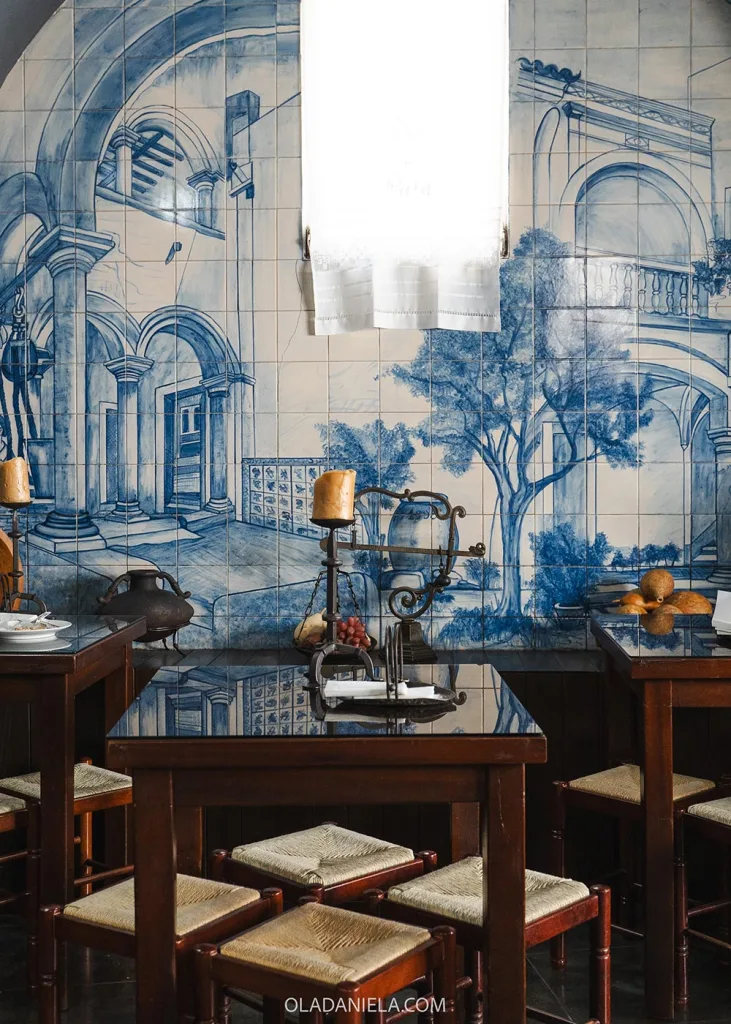

If you depart Lisbon early enough, you’ll arrive in time for a mid-morning coffee and a snack. While Lisbon has the pastel de nata, Évora has a handful of traditional sweet treats that you must try. The best place to go is Pastelaria Conventual Pão de Rala. Besides a counter filled with traditional doces conventuais (convent sweets), the café-bakery also has beautiful interiors with hand-painted blue-and-white azulejos. Try the queijadas de Évora (small cheesecakes), pão de rala (local stuffed cake), or my favourite, sericaia (a fluffy soufflé-like sponge cake).
Visit the legendary Bone Chapel


On this side of town lies Évora’s infamous Chapel of Bones – or Capela dos Ossos. As the name suggests, this rather large chapel is filled floor-to-ceiling with human skulls and bones. In the late 16th century, monks relocated bones from 5,000 people to this specially built chapel next to the St. Francis Church (Igreja de São Francisco). The chapel has always been open to the public as a place where one can reflect on life, death, and the meaninglessness of material things.
If you prefer a day trip, this small-group tour from Lisbon includes a guided visit to the Chapel of Bones.
“Nós ossos que aqui estamos, pelos vossos esperamos”
“We bones that are here, for yours we wait” – reads the sign above the chapel door, asking each visitor to Évora’s Chapel of Bones reflect on their own mortality.
Don’t skip the mini history museum


The Bone Chapel is around the corner from Évora’s most beautiful garden, the Jardim Público de Évora (Public Garden). Here lies the remains of the former royal palace, and within is a fantastic and very worthwhile mini museum (the Centro Interpretativo da Cidade de Évora) that details the history of Évora through the centuries in both English and Portuguese. After, say hello to the park’s many peacocks.
Also nearby is the city market (Mercado Municipal de Évora). While it’s not as impressive as some of Portugal’s great daily produce markets, if you want foodie souvenirs I like the independent and traditional grocery store Zé do Bacalhau.
Read next… 20 best things to do in Évora, the Alentejo capital
Lunch: first taste of Alentejo cuisine


Traditional Alentejo food is fantastic, and eating in the regional capital is a joy. I’m a former food critic and my list of tried-and-tested Évora restaurants is packed with great choices. If you plan ahead, you could book a table at Taberna Típica Quarta-Feira for a feast that you’ll roll out from; arrive early to snag a bar seat at Botequim da Mouraria; or go to an old-school local institution like Fialho.
Read next… Where to eat in Évora: best restaurants, cafés & sweets
Afternoon: Roman temple & cathedral

With a full belly, make your way up to Évora’s tallest hill, where you’ll see evidence of the three major civilisations that made their mark here. The Corinthian-style Roman temple from the early 1st century AD is a sight to behold. I like to sit in the quiosque (kiosk) in the garden across the road with a coffee or sparkling water and just take it in. From here you can also see a Moorish tower.
Then around the corner, visit Évora’s Sé – the biggest medieval cathedral in Portugal, built between 1186 and 1250. If you have the strength (or sheer determination) it’s worth climbing the stairs to the roof where you’ll take in the best view of Évora.
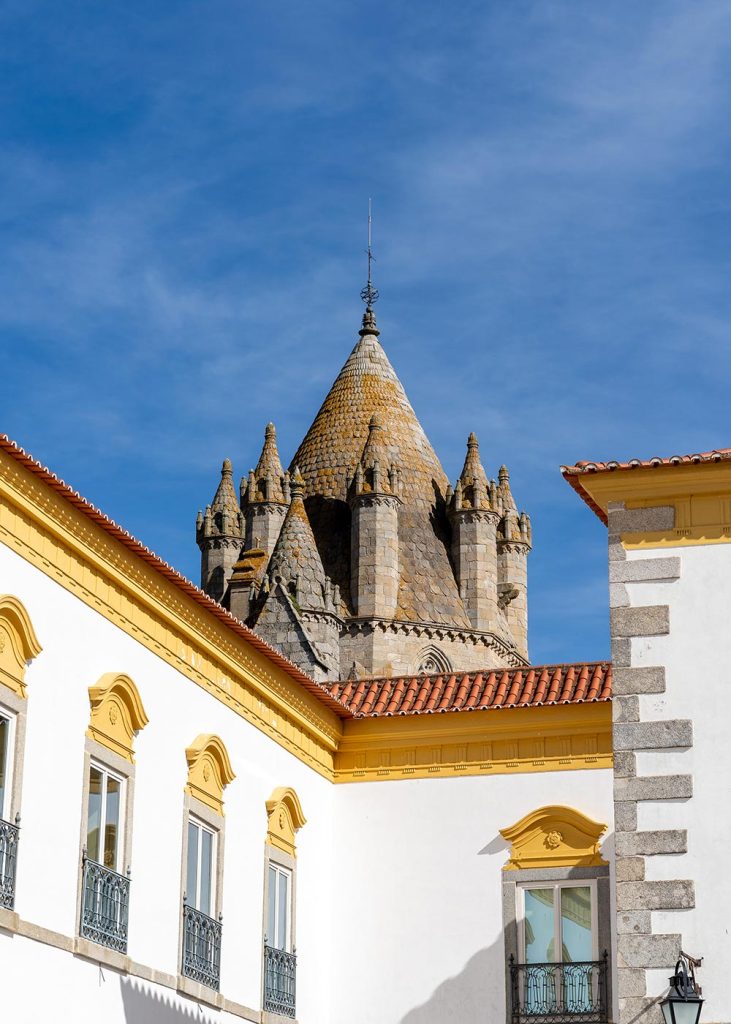

Tip: If you’re short on time and hungry for knowledge, a guided walking tour is the best way to see Évora. The main sights are within walking distance, and a talented guide can bring the story of each to life. This quick 2.5-hour tour ticks off the three sights I’ve just mentioned, while this three-hour tour goes more in-depth with extra stops.
Choose your own Évora adventure
I like to include lots of choice in my itineraries to give you the freedom to explore your way. I live in Portugal so most of the time my guides are based on 4-5 visits, so rather that say do this, do that – here is a list of suggestions so you know what your options are.
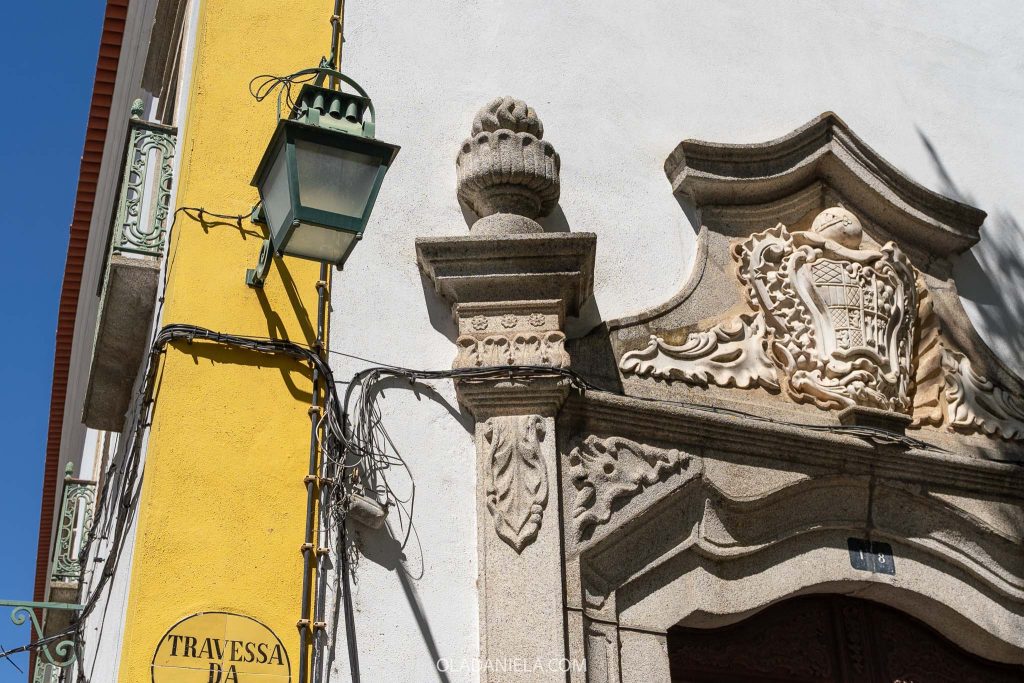
The main unmissable sights in Évora are the Bone Chapel, Cathedral and Roman Temple. After ticking those off, you might like to:
- Lose yourself in Évora’s charming streets. Within the city walls is a labyrinth of cobblestone streets and white-washed homes trimmed with Alentejo yellow paint.
- Look for houses built into Évora’s aqueduct. The 16th-century Agua de Prata Aqueduct runs for over 18 kilometres (11 miles).
- Relax in Praça do Giraldo, Évora’s main square. It’s a great spot for a sunset drink with a side of people watching.
- Visit the Évora Museum, set within the halls of a former archbishop’s palace. Think Roman sculptures, Visigothic and medieval artefacts, and Portuguese and Flemish paintings.
- Seek art at the Palácio dos Duques de Cadaval (Cadaval Palace). Sometimes this private palace hosts special exhibitions.
- Soak in a Roman-style bath. At In Acqua Veritas they’ve recreated the atmosphere of ancient Roman bathing rituals with a touch of luxury.
- Visit many, many more churches. In the 15th century, Portugal’s king started living in Évora, bringing a golden age. Check out the Santa Clara Convent, the São Francisco Convent, Igreja da Misericórdia, and Os Lóios Convent from that time.
- Shop for artisanal, handmade souvenirs. The Alentejo has a rich artisan heritage, and Évora has some beautiful boutiques and historic shops. I’ve listed some favourites in my Évora shopping guide here.
Read next… Where to shop in Évora: artisans & boutiques
Check into your Évora hotel
If you haven’t already checked in, now’s the time. When it comes to planning where to stay in Évora, I find anywhere within the old city walls is perfect. If you look on a map you’ll easily be able to make out the round walls that encircle the centre.
Évora is fairly flat, so it’s easy to navigate on foot – that said, the streets are cobblestone and not easy if you have mobility issues.
Within the historic centre, I’ve stayed at the 5-star M’ar de Ar Aqueduto hotel, which, as the name suggests, has aqueduct views. I need to return in summer so I can laze by the pool with that vista.
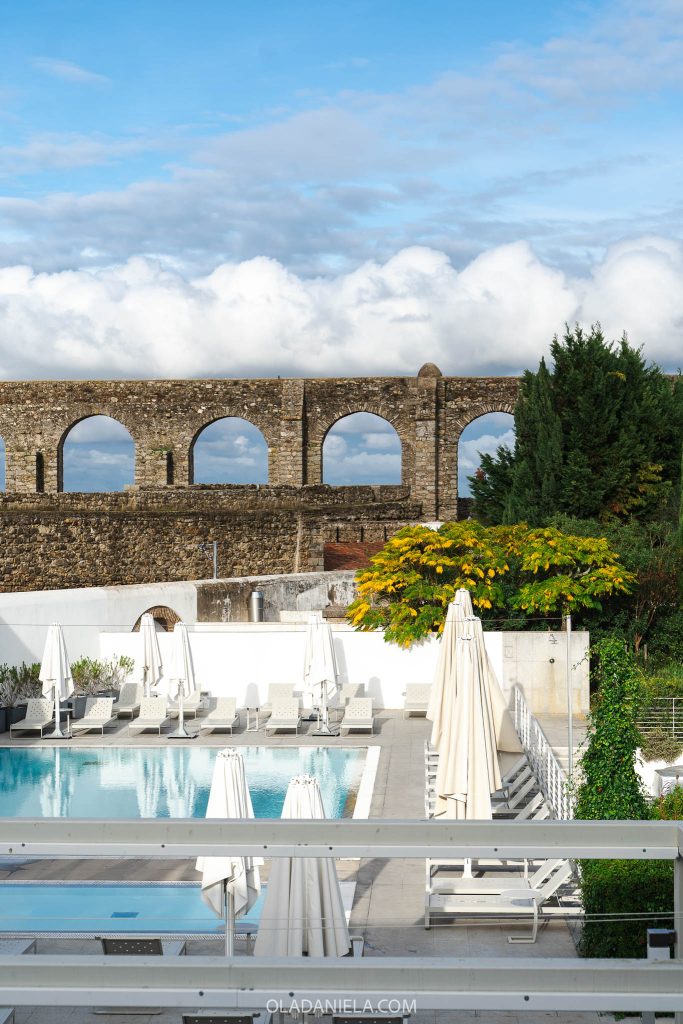
Alternatively, the historic 4-star Hotel Albergaria do Calvário would be great, or I’ve heard good things about the modern 4-star Évora Olive Hotel.
Alternatively, you could also choose to stay in the countryside around Évora. It’s easy to park at the edges of the city walls when you want to explore. Nearby look up at the historic 5-star Convento do Espinheiro, or luxury guesthouse A Casa do Governador. Or for a more relaxed retreat, the 4-star Octant Évora estate is also on my to-stay list.
Evening: sunset in Praça do Giraldo & dinner
The heart of Évora is Praça do Giraldo, and it’s here in the main square that locals meet and gather around café tables that sprawl across the huge plaza. Join them for a pre-dinner imperial (small beer) or sunset cocktail.
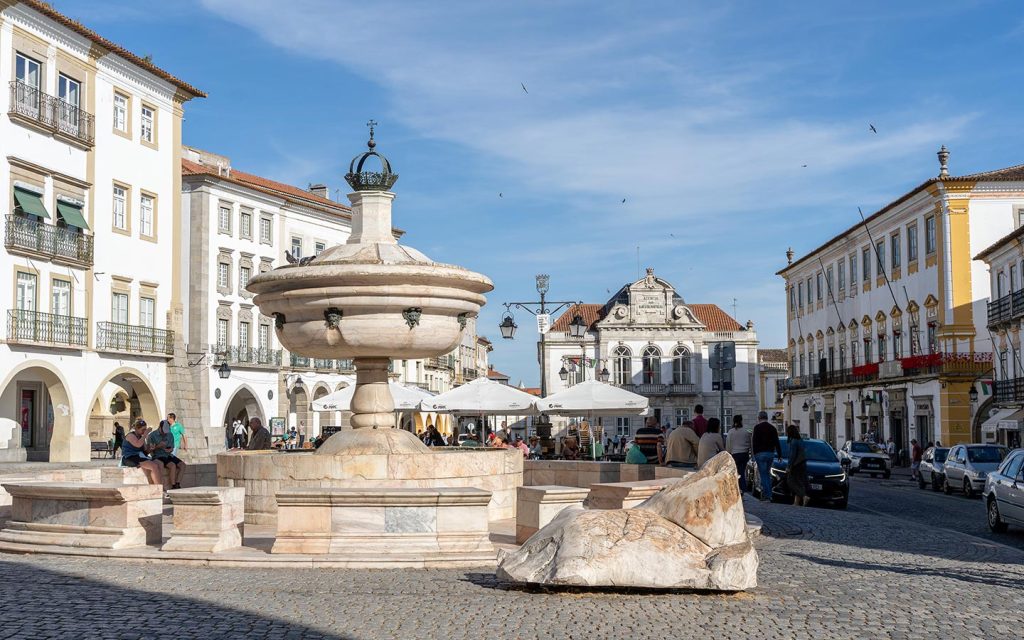
On my last visit the square was rammed with university students in black capes, their friends and families. It was some sort of hazing event to celebrate first year students becoming second year and receiving their capes on November 1. The date also marked the 465-years anniversary of Évora University. After aperitivo in the square, we slipped down a side street to Café Alentejo (an Évora classic) for dinner. When we returned, things were heating up. The students were gathered in faculty groups, forming many circles in the square where they were chanting and singing songs.
In a semi organised fashion, students started entering the circle in pairs – a second-year student with their padrinho or madrinho (“godfather” or “godmother” – an older or past student). The younger student would get wrapped in the flowing black cape like a burrito, then spun around. The nominated padrinho or madrinho would then take a huge gulp of beer from a 1L bottle and spray it down their back as families and friends watched on. Beer baptism! So student.
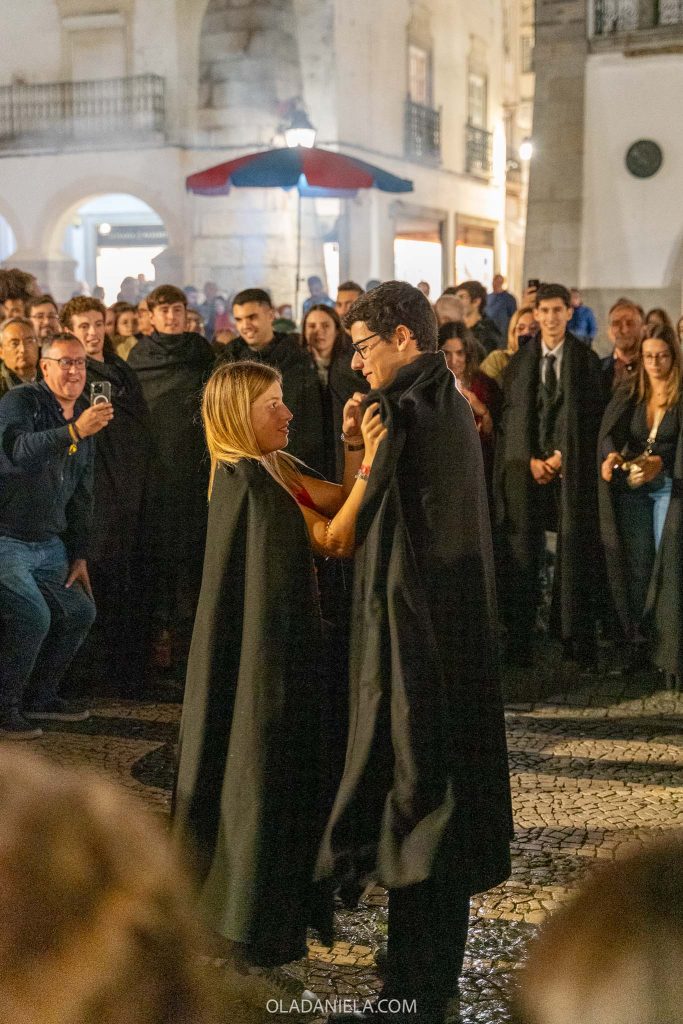
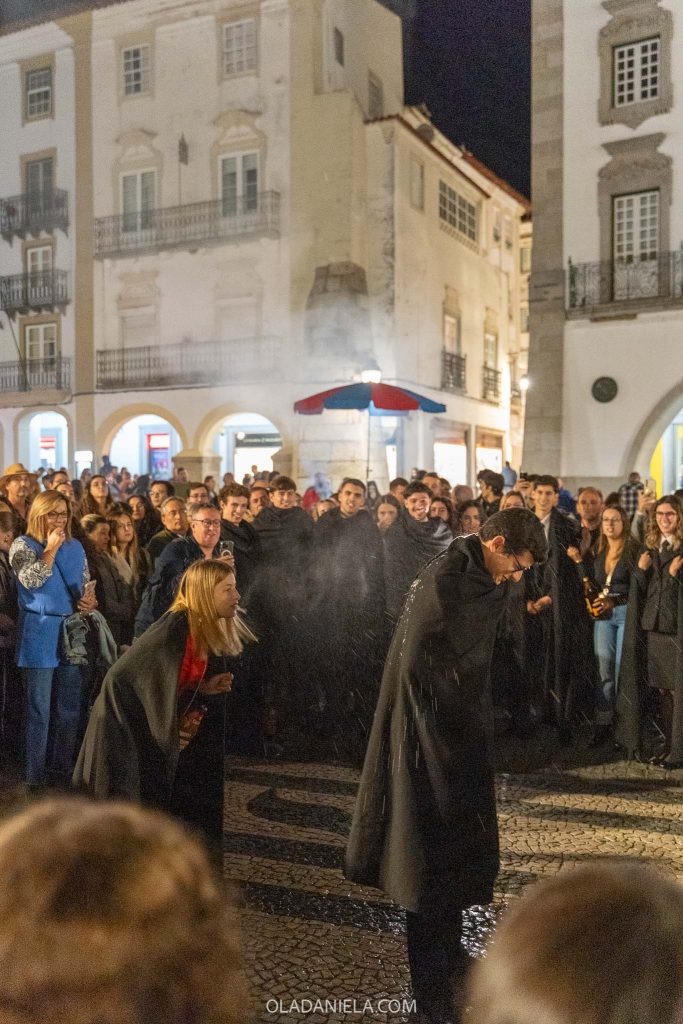
We’d heard word that at midnight the students would gather on the steps of the cathedral to throw pantufas (slippers) into the air. Apparently it used to be proper shoes, but there were incidents. While the midnight shoe toss event was a bit of a fizz, I can recommend Estrela d’Ouro for a post-dinner drink.
Day 2 in Évora
Évora is a fantastic small city. As you can see from my suggestions for the afternoon of Day 1, there are plenty of things to do if you have just 48 hours or two days in Évora. But for fast-paced travellers or countryside lovers, on Day 2 I suggest you go beyond the historic city walls. Here’s some ideas for your Évora itinerary.
Morning: Visit the Cromlech of the Almendres
There’s a megalithic stone circle a few kilometres outside Évora that pre-dates Stonehenge by more than 2,000 years. While less monumental in size, the Cromlech of the Almendres is thought to be 7,000 years old – and the best way to understand the rocks is with a local guide who will bring the history to life. You’ll go on a guided hike through the Serra de Valverde to the Almendres megalithic monument, plus visit Castelo do Geraldo and learn about the legendary Gerald the Fearless.
Or tour the cork forests
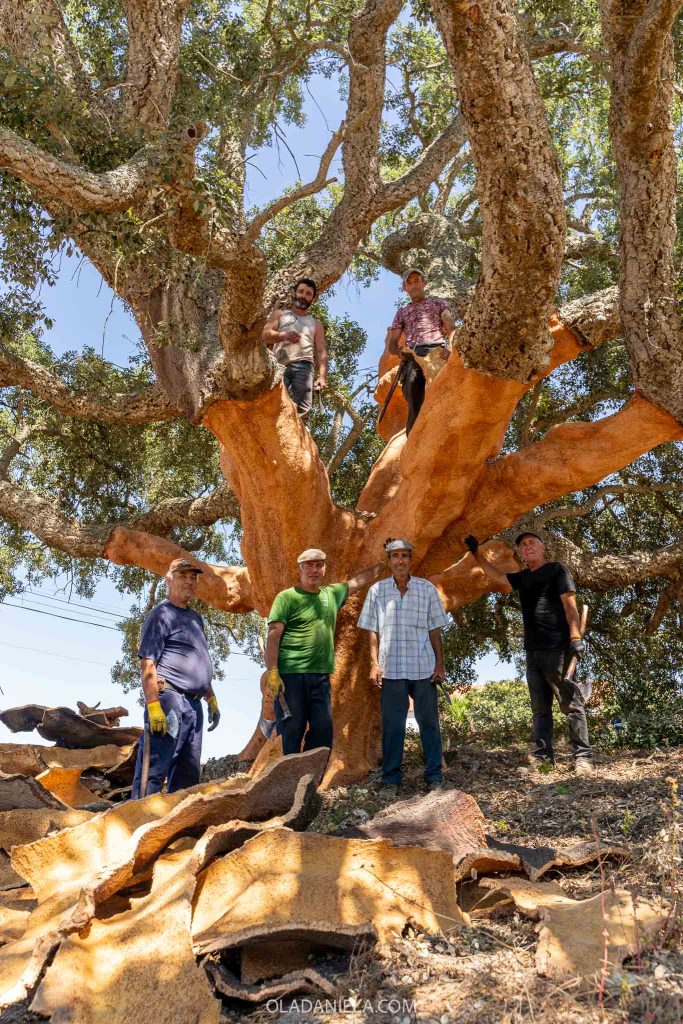
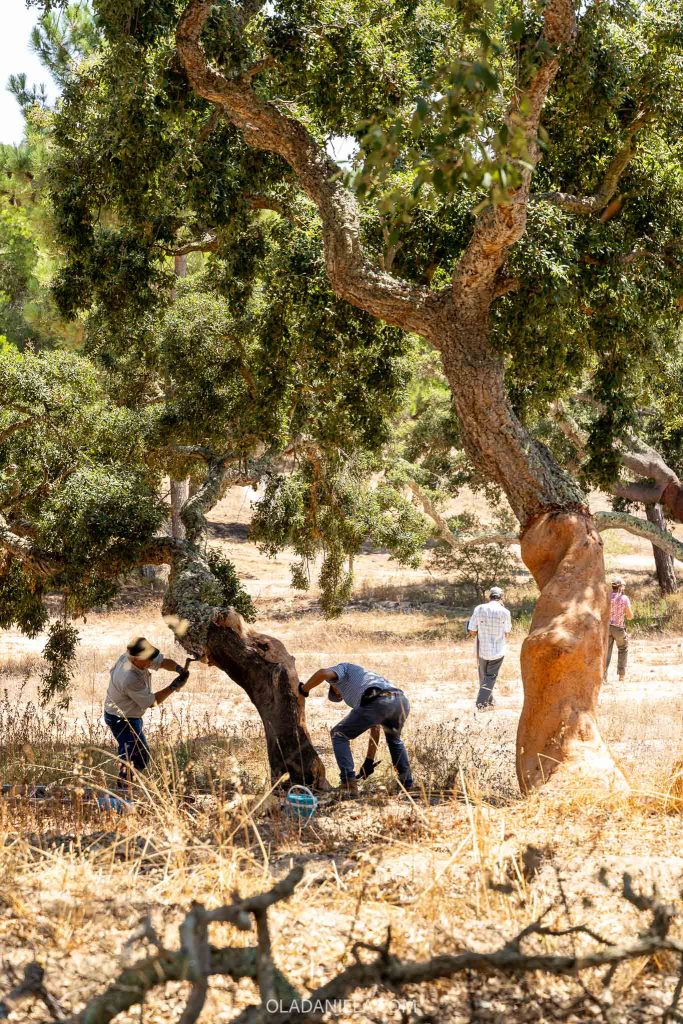
One of Portugal’s greatest exports is cork – the country accounts for more than 50% of the world’s cork production. Most of that comes from the Alentejo, this vast region that takes up around a third of continental Portugal. The world of cork is fascinating – the bark of cork trees is harvested every nine years during the summer months, and it takes at least three cycles to get cork quality suitable for wine stoppers.
Visiting a montado where cork trees are part of a farm ecosystem with black pigs and more is so interesting. You can visit a sixth-generation 1,400-acre family estate on a special cork walk or in a jeep and learn how the family sustainably manages the cork forest as a farm.
Lunch: Vineyard feast
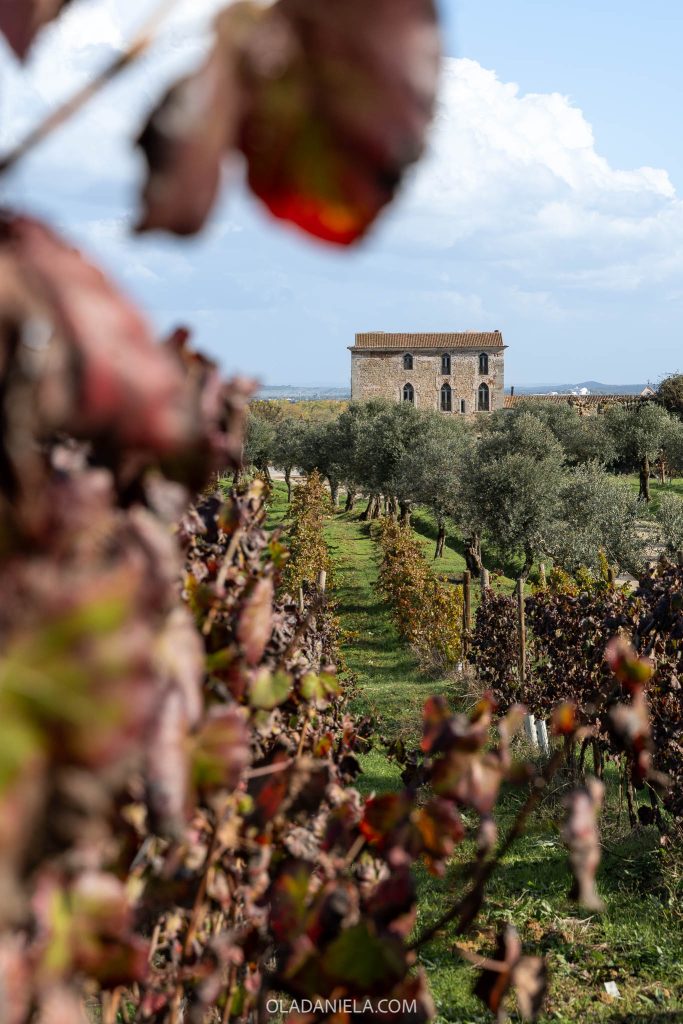
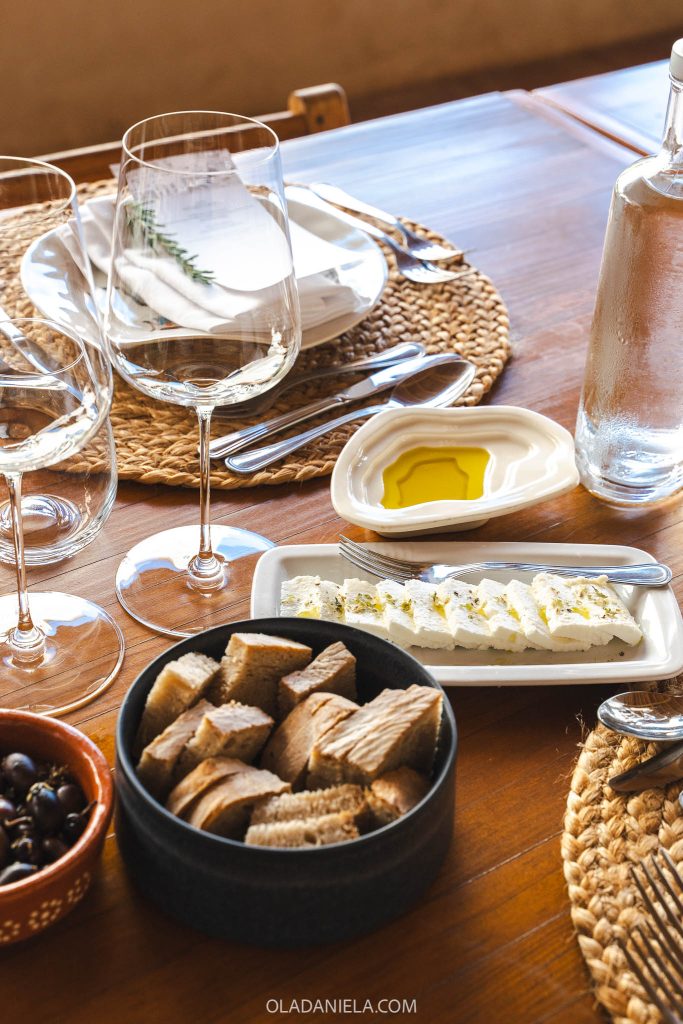
If you’re a wine lover, I suggest you venture outside the city this afternoon to taste the Alentejo’s tannin-heavy red wines and strong whites. I had a wonderful lunch at Fitapreta winery (pictured above), a stunning estate just 10 kilometres (6 miles) from Évora. Herdade do Esporão is another beautiful estate with a Michelin-starred (plus a Green Star!) restaurant, though you can also enjoy a more casual lunch at the bar.
For something more relaxed, Ervideira is another winery with a great tasting room. Here, you can expect rustic, traditional fare and enjoy a tasting experience (plus there are very cute donkeys to pat!)
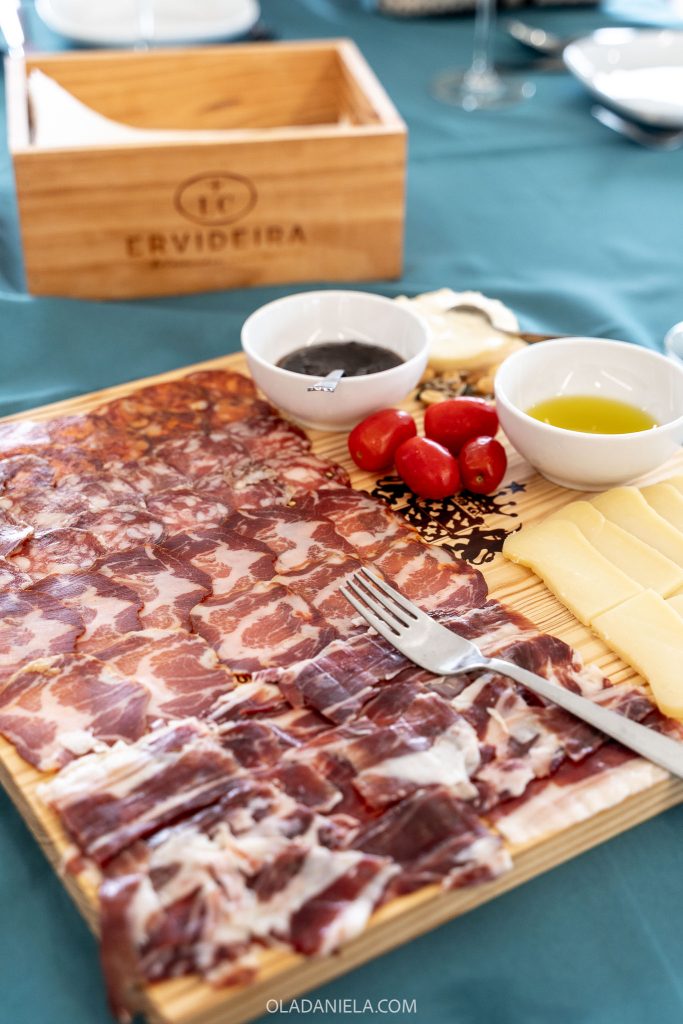
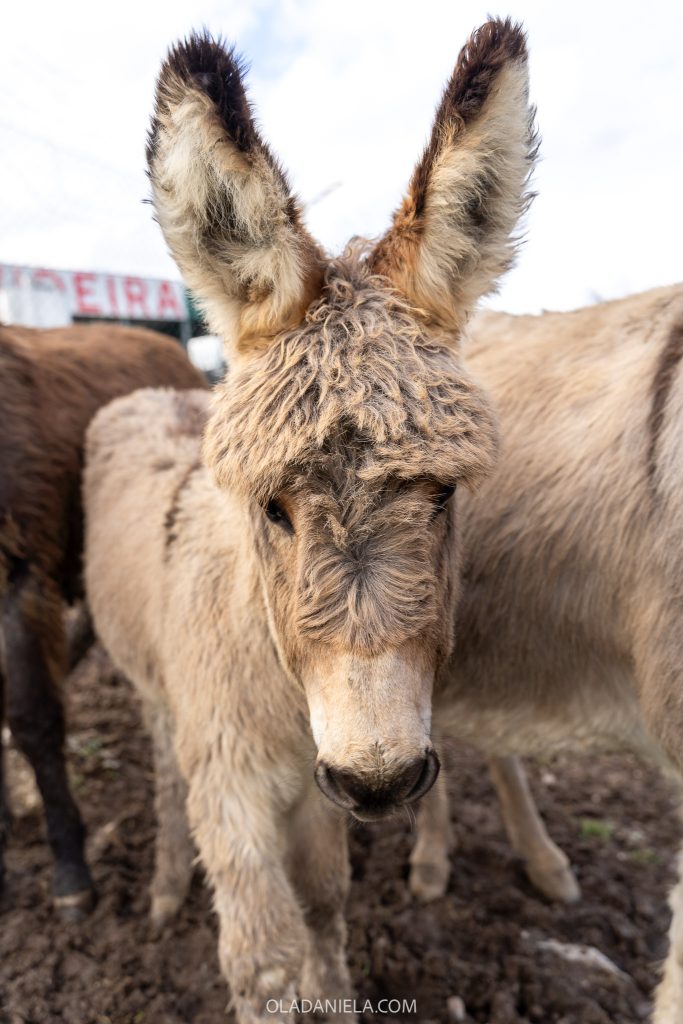
If you stay in or close to the city, O Moinho do Cu Torto is a great restaurant with traditional Alentejo dishes.
Afternoon: Alentejo wine tasting
Taste the Alentejo’s warm climate wines at cellar doors within Évora (drop by Enoteca Cartuxa or Ervideira) – or at the source. Organise a tasting at nearby estates, or join a tour (so you don’t have to drive!). For a guided experience that takes you into the countryside, join this small-group wine tasting tour. It also stops in the nearby village of Arraiolos, which is famous for its artisan rug weaving. Or this excellent full-day tour that combines time exploring medieval Monsaraz village with a stop at Corval, the pottery village, and a local winery.
Read next… Hotel Review: A dreamy weekend at Hotel Convento de São Paulo
Or explore small Alentejo villages
There are a handful of fantastic Alentejo villages within half-an-hour or so of Évora. On the afternoon of your second day, you could hit the road exploring one of the below:
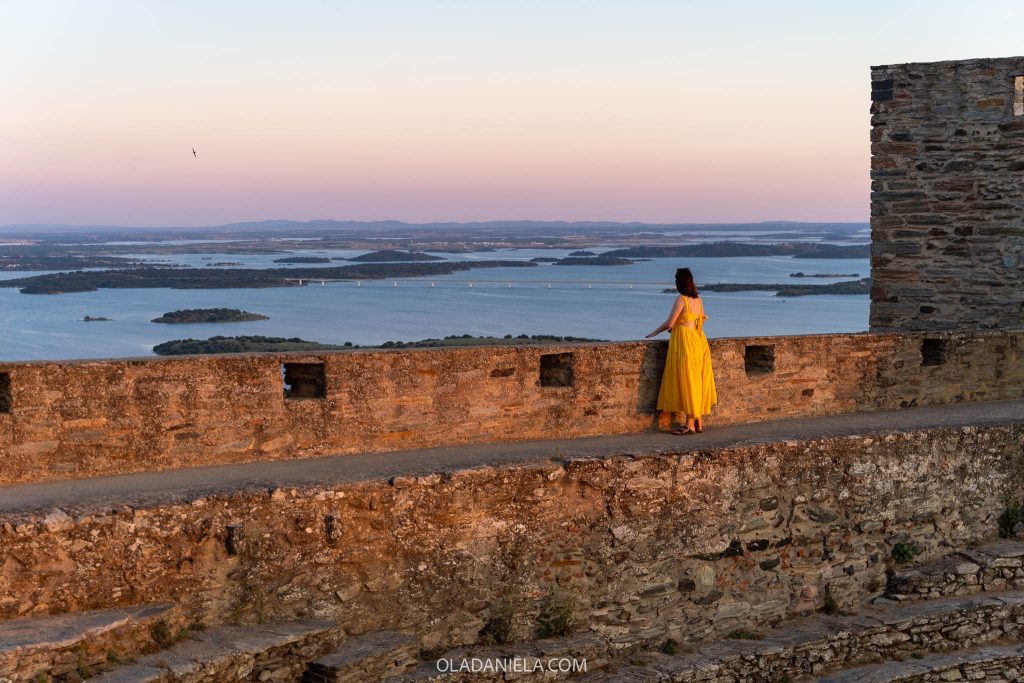
- Monsaraz: the most magical medieval walled village atop a hill. Ideal for sunset. (Pictured)
- Corval: village famous for its pottery traditions, with nearly two dozen workshops.
- Arraiolos: town famous for hand-stitched rugs.
- Estremoz: famous marble city with a white tower and Saturday flea market
- Redondo: typical village with pottery traditions
- Viana do Alentejo: quiet town with an unusual castle and church
- Alcáçovas: quiet village with Portugal’s last cowbell workshop
Evening: Dinner in town (or a small village)
Cap off your 48 hours in Évora with one final Alentejo meal. If you’re heading back to the city for dinner, use my list of favourite Évora restaurants to find somewhere cosy or chic.
Read next: Where to eat in Évora: Best Restaurants, Cafés & Sweets
Or if you’re outside the city anyway… my favourite spot for dinner might be in Monsaraz village. Lock in a table at Sabores de Monsaraz, Sahida, or Taverna Os Templários for a delicious meal with views over Lake Alqueva. Bonus points if you time it to align with sunset.
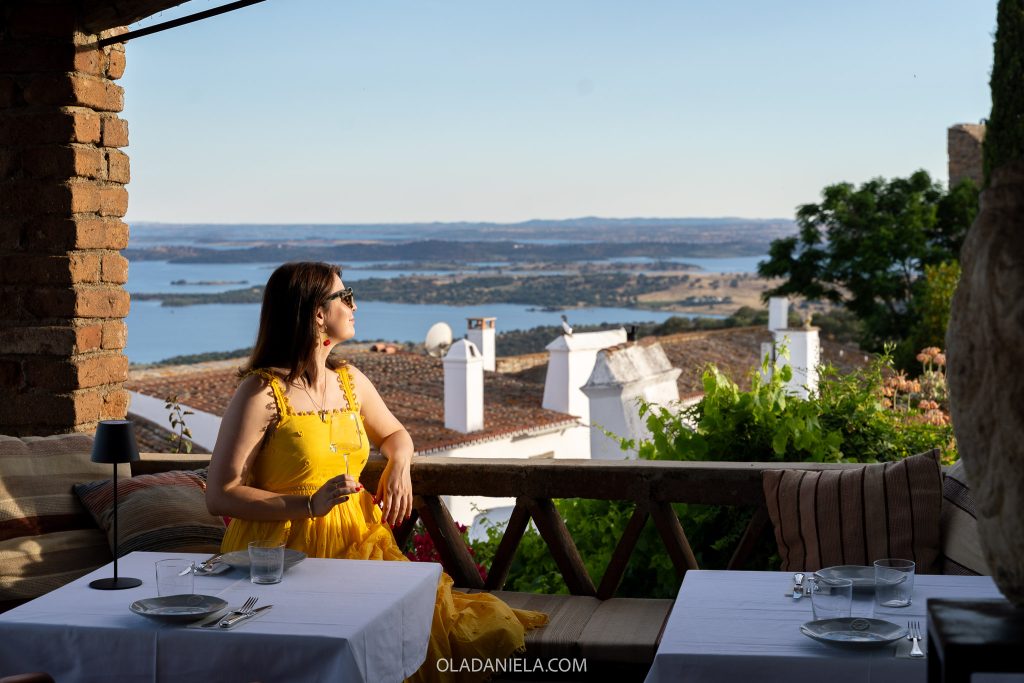
Extend the fun: Best day trips from Évora
If you have extra time in the Alentejo, Évora makes a great base for exploring the surrounding countryside, historic towns, and unique cultural sites. You could stay an extra night or two! Here are five of the best day trips from Évora:
Monsaraz, Lake Alqueva & Corval
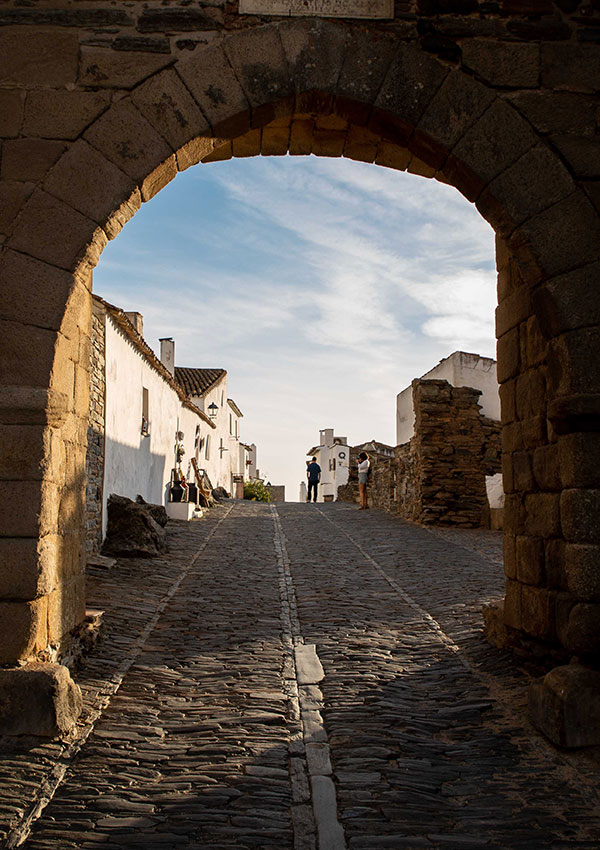
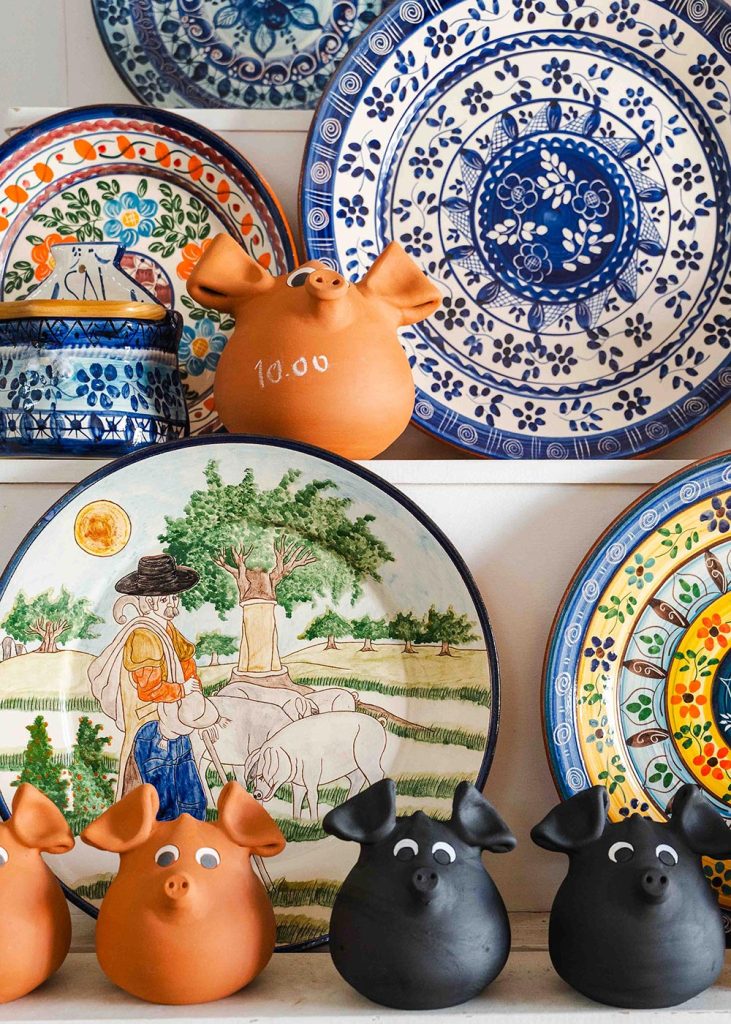
I’ve mentioned Monsaraz and Corval already as it’s one of my favourite extensions to any Évora itinerary. There’s just something magic about Monsaraz, a stunning medieval village perched high above Lake Alqueva. From here you’ll have views over the surrounding countryside, can explore the castle, take a boat trip on the lake, or go stargazing in the Dark Sky Reserve. While here, don’t miss Corval pottery village.
Read next… 48 hours in Monsaraz
Arraiolos and its famous rugs
This typical whitewashed Alentejo town is known for its centuries-old tradition of hand-stitched rugs. Visit the Arraiolos interpretive centre to see artisans at work, explore the circular hilltop castle, and sample local empanadas (chicken pies). I like O Alprende for lunch, and nearby Fitapreta is perfect for a wine tasting.
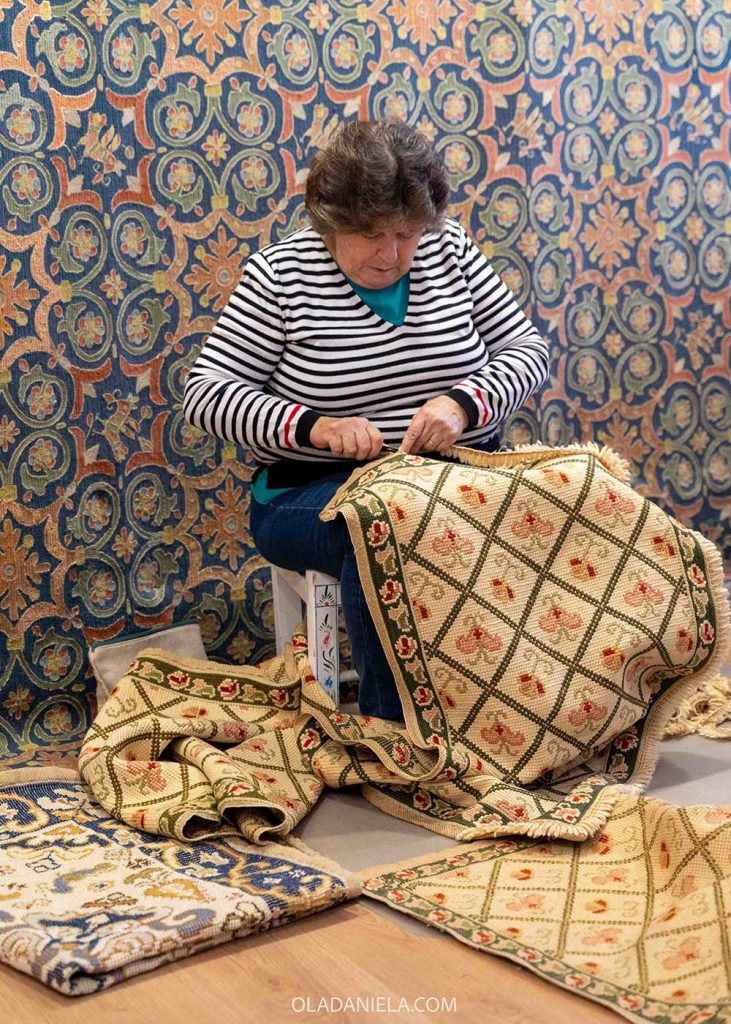
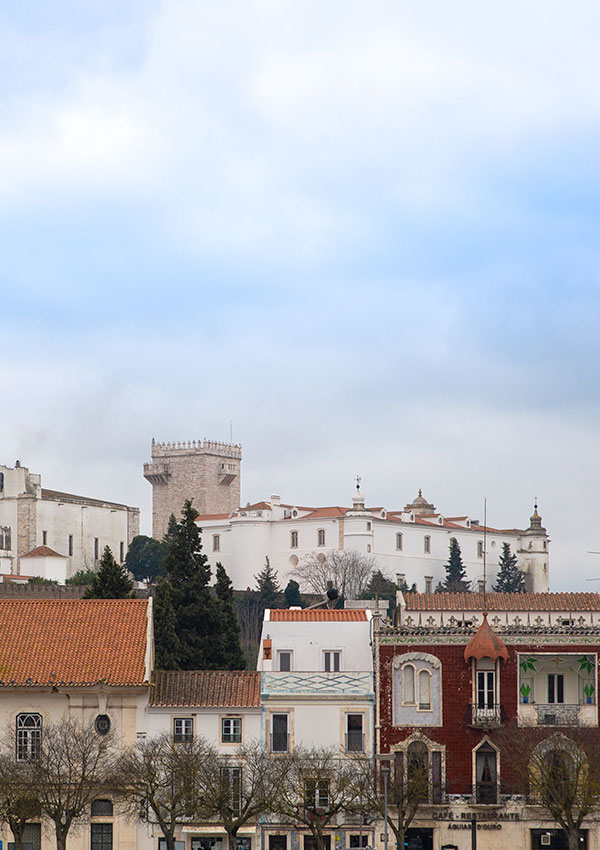
Estremoz and the marble tower
Nicknamed the “white city” for its marble-clad streets and buildings, Estremoz is a larger town with plenty of character. Visit the medieval castle, the city’s iconic white tower, and nearby marble quarries. Don’t miss the tiles in the Berardo Museum, or the Boneco Museum. Better yet, time your visit to align with the brilliant Saturday flea market.
Vila Viçosa and Portugal’s royal heritage
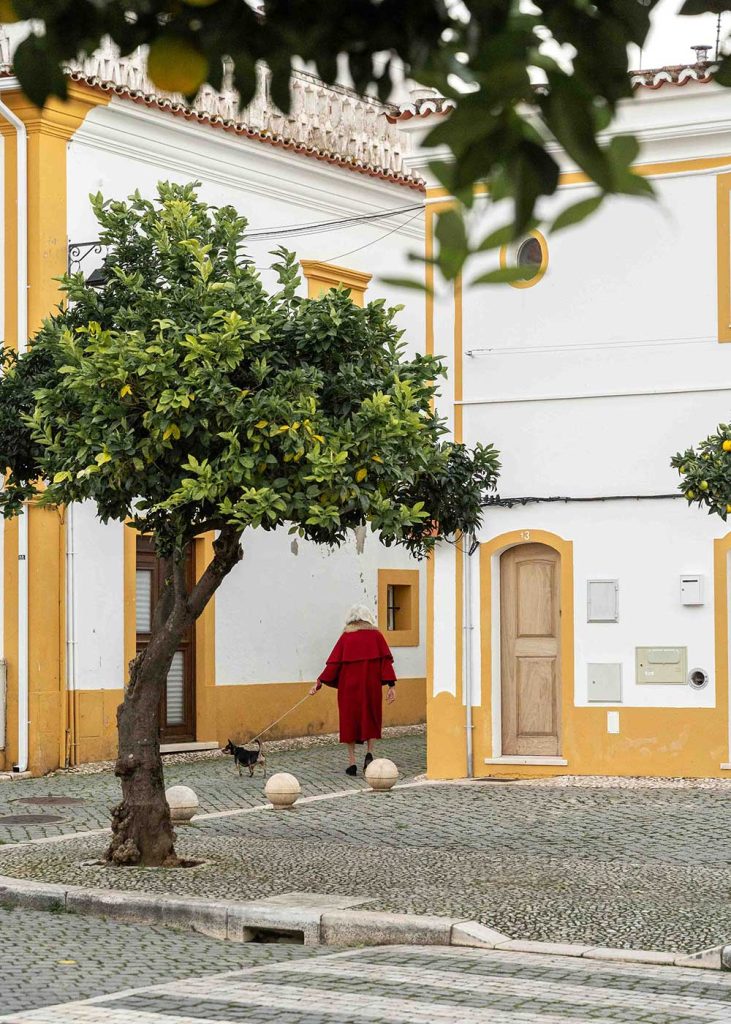
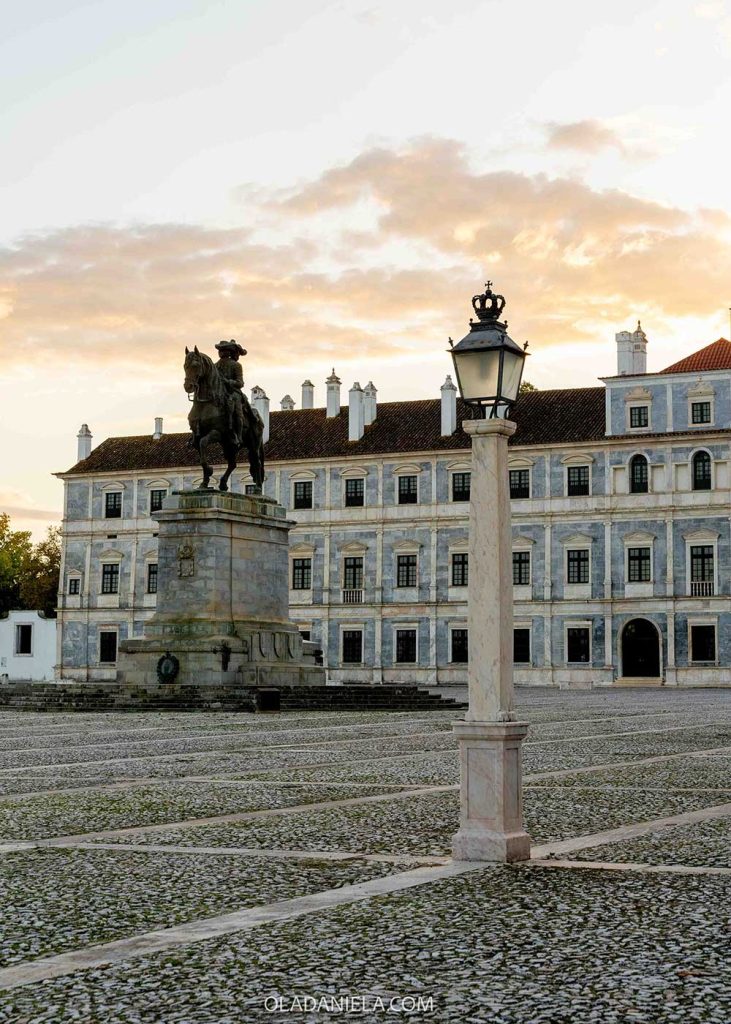
A gem hidden in plain site, Vila Viçosa is an elegant town home to the impressive Ducal Palace, which was once a residence of the Portuguese royal family. Explore its grand halls, visit the marble-clad streets, stomp around the castle and enjoy a relaxed lunch in the historic centre. This experience explores the marble mines near Vila Viçosa. Nearby you can drop by the village of Borba to explore Alentejo wine too.
Alentejo wine country

The region surrounding Évora is packed with wineries offering wine tastings and vineyard tours. Head to Herdade do Freixo, Ervideira, Herdade do Esporão, Fitapreta, or Cartuxa for a deep dive into Alentejo’s bold reds and rich whites, paired with delicious local cuisine.
Read next… 18 best places to visit in the Alentejo: prettiest villages, towns and cities
Where to stay in Évora: best hotels and guesthouses
You can stay anywhere in the old city centre of Évora and be within walking distance of the top sights and best restaurants, tascas, or sweet shops.
Top suggestions within Évora’s historic centre:
- M’ar de Ar Aqueduto – 5-star, aqueduct views!
- Hotel Albergaria do Calvário – 4-star, historic
- Évora Olive Hotel – 4-star, modern
- Templo Boutique Hotel – guesthouse
Top suggestions outside Évora:
- Convento do Espinheiro – 5-star historic hotel
- A Casa do Governador – luxury guesthouse
- Octant Évora – 4-star estate
That’s how I’d spend 48 hours in Évora. If you plan to use my two-day Évora itinerary, leave me a comment! It makes my day 🙂
Keep reading…
- 20 best things to do in Évora, the Alentejo capital
- Where to eat in Évora: The Best Restaurants, Cafés & Sweets
- Portuguese artisans: 10 traditional crafts from the Alentejo
- 22 most beautiful castles in Portugal
- 48 hours in Monsaraz
- Portugal’s pottery village: Why you should visit São Pedro do Corval
- The best things to do in Estremoz
- The average person’s guide to A-list Comporta: Portugal’s luxe beach town
- Bottomless wine and secret cellars: Redondo’s tasca and talha trail

